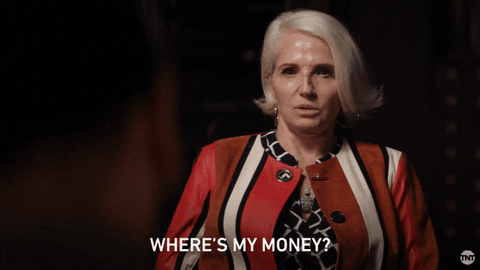Why the 4% Rule Doesn't Work For Retirees
Don't Run Out of Money
The 4% withdrawal rate is a very common rule in retirement planning. It says that retirees can safely withdraw about 4% of their portfolio in retirement with an annual increase of 3% for inflation.
For example, someone with retirement savings of $1 million could withdraw $40,000 in year one, $41,200 in year two, etc.
The math is based on a 1990 article from William Bengen titled “Determining Withdrawal Rates Using Historical Data.” Bengen was an MIT- trained aeronautical engineer turned financial planner. He determined that, based on historical market performance, a retiree could sustainably withdraw just over 4% of their portfolio over thirty years and, for the most part, not outlive their money.
For those approaching retirement, or younger folks looking to retire early, the 4% rule is a good way of gauging when you’re in the retirement ballpark. Four percent is 1/25th, so stated otherwise, folks should aim to save about 25x their required portfolio withdrawals in year one of retirement.
But as many practitioners have pointed out since 1990, the 4% rule is flawed and is not realistic for several reasons.
First, a static withdrawal rate is too rigid for real world markets.
If markets fall, taking the original 4% amount might cause “sequence of returns” risk where withdrawals occur in falling markets and the portfolio never recovers.
Example: If you start with a $1 million dollars in your retirement portfolio and plan to take $40k per year (4%), what happens if there’s a recession and equity markets fall worldwide by 40%? A portfolio of 65% equities would drop by 26% - leaving our retirees with $740k at year end.
But they still need their $40k, which now equates to about 5.4% of the portfolio. Markets have little or no return for the next five years as the economy recovers. During that time, withdrawals take too much from principle and the portfolio never fully recovers.
Second, retirees should earmark specific assets to fund withdrawals.
The 4% rule doesn’t dictate the source of withdrawals from a portfolio. In other words, what investments are you selling and transferring into your spending accounts? Assuming a 65/35 equity/fixed income account—I would imagine it wouldn’t come from equities, but rather the bonds/cash portion of the account.
But the 4% rule really says nothing about that. It just says to keep the account in balance, and related to the example above, it’s entirely possible that retirees would have to sell equities to rebalance the account and replenish cash and bonds.
There needs to be a “buffer” so that retirees don’t HAVE to sell equities in a down market but can instead keep the equities invested for a full recovery. But the 4% rule doesn’t mention that.
In other words, just knowing withdrawal rates isn’t enough—you need more.

Retirement researcher Wade Pfau makes a great analogy for why the 4% rule can’t alone suffice as a guide for retirement withdrawals: The Mountain.
Saving for retirement is like climbing a mountain, where managing retirement is like descending back down. Many climbers know that it’s actually more dangerous to descend the mountain than to climb it. Climbers are more fatigued, can fall farther and faster when facing the downslope, and our bodies are better suited to climb uphill rather than down.
Slipping on the way up is no problem. Slipping on the way down can be disastrous.
Saying “just save this much, and spend this much later, and you’re good” is like saying “just follow the signs to the top of Mt. Everest, then follow them back down.” While technically true, this isn’t very practical advice.
Retirees need knowledge, experience, and a full understanding of all potential risks—and also a good guide (Sherpa/financial planner) to navigate the mission at hand.
The Value of a Guide: Even the most disciplined, prepared, and dedicated individuals can fall short of their goals due to emotional mistakes. When it comes to money, it pays to have an objective source to provide guidance, accountability, and management.
Sustaining retirement savings throughout your life through prudent withdrawal management is a core value proposition of a financial planner/advisor. You’ve worked this hard, don’t give it all away to an avoidable mistake now.
In the next article, I’ll discuss how a few strategies to layer into the 4% rule to account for these shortfalls.
Disclosure: Claro Advisors LLC ("Claro") is a registered investment advisor. Advisory services are only offered to clients or prospective clients where Claro and it's representatives are properly licensed or exempt from licensure.
Past performance shown is not indicative of future results, which could differ substantially.
The information provided is for educational and informational purposes only and does not constitute investment advice and it should not be relied on as such. It should not be considered a solicitation to buy or an offer to sell a security. It does not take into account any investor's particular investment objectives, strategies, tax status or investment horizon. You should consult your attorney or tax advisor.
The views expressed in this commentary are subject to change based on market and other conditions. These documents may contain certain statements that may be deemed forward‐looking statements. Please note that any such statements are not guarantees of any future performance and actual results or developments may differ materially from those projected. Any projections, market outlooks, or estimates are based upon certain assumptions and should not be construed as indicative of actual events that will occur.
 EMoney
EMoney Fidelity
Fidelity Schwab
Schwab

